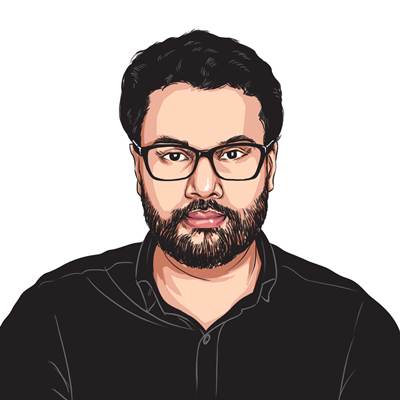How spirited fight by former students saved Pune’s Deccan College after the British decided to close it down
During the 1930s, the Bombay Presidency too felt the heat of the global economic depression. A committee suggested austerity measures, including expenditure cuts in education, noting that the government could not keep up its high expenses on Deccan College.
 Deccan College began in 1821 as Poona Sanskrit College with efforts by Bombay Governor Mountstuart Elphinstone. (File)
Deccan College began in 1821 as Poona Sanskrit College with efforts by Bombay Governor Mountstuart Elphinstone. (File) Widely known for its research work and for being among the oldest higher education institutions in the country, the Deccan College Post Graduate and Research Institute would not have been around if not for a group of alumni and their indomitable spirit. In 1933, when the then government decided to shut down the institute, citing financial reasons, and sell off its properties, its alumni banded together to form a union and mounted a spirited resistance to ensure that the pioneering educational institution continued to serve its founding objective.
Beginnings in ‘Dakshina Fund’
Deccan College began in 1821 as Poona Sanskrit College with efforts by Bombay Governor Mountstuart Elphinstone who tweaked the granting patterns of the ‘Dakshina Fund’ which was started during the Peshwa Rule and was continued by the company government as part of its policy to protect all existing religious and charitable establishments.
For the first three decades of its existence, the institute was housed in Vishrambaug Wada in Kasba Peth although its popularity had steadily grown and the premises were proving inadequate. In the early 1860s, Parsi businessman and philanthropist Baronet Jamsetjee Jejeebhoy offered to donate Rs 1 lakh so the government could erect a building to house the college. The government accepted the donation and also provided a site measuring approximately 100 acres, worth Rs 95,000 then, and constructed the building by spending a total of Rs 2.7 lakh. Later on, the government, at its own expense, also constructed residences for professors by acquiring additional land. After it shifted to this new site, the institute was christened Deccan College to signify the fact that its students came from across the Deccan region, as per ‘Deccan College A Retrospect’ written by J Nelson Fraser in 1902.
 For the first three decades of its existence, the institute was housed in Vishrambaug Wada in Kasba Peth although its popularity had steadily grown and the premises were proving inadequate.
For the first three decades of its existence, the institute was housed in Vishrambaug Wada in Kasba Peth although its popularity had steadily grown and the premises were proving inadequate. Shifting the college to a location several kilometres outside the city and turning it into a residential institute was not a uniformly popular decision. As per Narayan Vishnu Zoshi, who wrote Pune Shaharache Varnan in 1868, poor families who wanted to educate their kids were facing difficulties due to high expenses of the hostels. “Walking to such a long distance everyday leaves very little energy for study. Many people can’t afford to spend Rs 8 to 10 to stay in the hostels. Instead if the government had found a site for the college near Parvati or Chaturshringi or bought the Vishrambaug Wada and created the facilities there it would have been beneficial,” Zoshi wrote.
1930s’ depression: Govt decides to sell Deccan College
With the world reeling under the infamous economic depression of the 1930s, the financial situation in the Bombay Presidency was no different. In 1932, the government appointed the Reorganizing Committee to suggest ways to make the economic administration of the presidency more efficient. The committee submitted its report in 1933 suggesting austerity measures, including cuts in government spending on education.
With regard to the Deccan College, the committee noted that it was an institute of historical importance but pointed out that the government could not keep up its high expenditure on the institute. “There is no institution in this presidency which possesses such a fine tradition as this college and its closure cannot but mean the sacrifice of some of these traditions… But we do not think that sentimental considerations should outweigh considerations of finance,” said the report. It suggested that the fees in the institute be increased to the extent that it considerably reduced the need for government funds. The new arrangement was to be observed for five years. If that did not work out, attempts were to be made to find a private society willing to run the college. If neither alternative was found, the government would close down the college.
For reasons unknown, the government decided to ignore the first part of the recommendation and decided to adopt the latter with immediate effect. In February 1933, the government invited proposals from private bodies to run the institute but rejected the bids by the Deccan College Past Students’ Association (DCPSA), which was formed with the purpose to save the college, and Deccan Education Society (DES) after “finding them unagreeable”. Soon after, it announced its decision to sell the land and the college building to Parsee Public School Society for Rs 4.98 lakh.
At this point, it appeared that the pioneering institute was a lost cause. What changed things for good was the college inviting Barrister M R Jayakar for the anniversary of the institute believing that it may well turn out to be the last annual event before its abolition. In his speech, as per media reports, Jayakar said that although he felt that the speech was timed like a eulogy to the institute, if efforts are made it may turn into a war cry against the closure. As per media reports, he assured the gathering that he will do all in his might to fight the government decision.
Soon after, he started communicating with people in high positions including Governor Lord Brabourne; Bhavanrao Shriniwasrao Pant Pratinidhi of Aundh, who also headed the DCPSA; the Attorney General and the who’s who in the then government. DCPSA members S G Sathe, S K Belwalkar, N C Kelkar, the then principal E A Wodehouse and Jamsetjee Jejeebhoy, the sixth Baronet, played an important part in the fight.
 In February 1933, the government invited proposals from private bodies to run the institute but rejected the bids by the Deccan College Past Students’ Association (DCPSA).
In February 1933, the government invited proposals from private bodies to run the institute but rejected the bids by the Deccan College Past Students’ Association (DCPSA). The barrister and others fighting for the cause soon realised that the only recourse they could hope to get was through the court of law. After the government applied to get a sanction for its sale of the Deccan College land and building, the parties filed an intervening application arguing against the sanction. The suit was filed on November 22, 1934. The issues were framed on July 20, 1935. The actual hearing of the evidence in the case began on December 16, 1935 and concluded on December 23.
A trial that generated considerable interest
The key evidence submitted by the former students was the letter written by Baronet Jejeebhoy to the then governor Bartle Frere on July 25, 1863 while making the offer to donate funds towards a permanent building for the college. The concluding sentence of the brief letter read:
“I would respectfully suggest that the land and buildings when erected may with advantage be conveyed to Trustees for exclusively educational uses for ever.”
Placing emphasis on this, the lawyers for the alumni argued that it was a necessary condition placed by Jejeebhoy that a trust be created to govern the future affairs of the institute and it must remain a cosmopolitan educational institute “for ever”.
The reports in English and Marathi newspapers show that there was considerable interest in the case among the intelligentsia of the state. “Throughout the hearing of the case, the District Court of Poona was packed to the full by interested listeners which included not only pleaders and educationalists, but also a good number of the old alumni of the Deccan College,” noted S G Sathe in a pamphlet published soon after the verdict.
The district court judgment that came out on January 17, 1936 put brakes on the sale of the land and the building, and instead directed the government to form a trust composed of local educationists and elected representatives and grant funds to run the institute for five years and let the trust decide on the future of the college.
Although the government challenged the judgment in the Bombay High Court, the final decree came in favour of reopening the college, which happened on August 17, 1939.
The trust that was created as per the court’s decree, the Deccan College Poona Trust, maintains the property with government assistance and makes it available to the institute which today stands as Deccan College Post Graduate and Research Institute.
For 83 years now, August 17 remains a red-letter day in Deccan College’s calendar. During a few initial years, it was celebrated as the institute’s foundation day. “Every year, August 17 is now marked as Revival Day. On this day, members of the Past Students Association and friends of the institute reunite at the campus and there is a day-long event,” said Prof Pramod Pandey, vice chancellor, Deccan College, who is also the vice president of the Past Students’ Association.




































